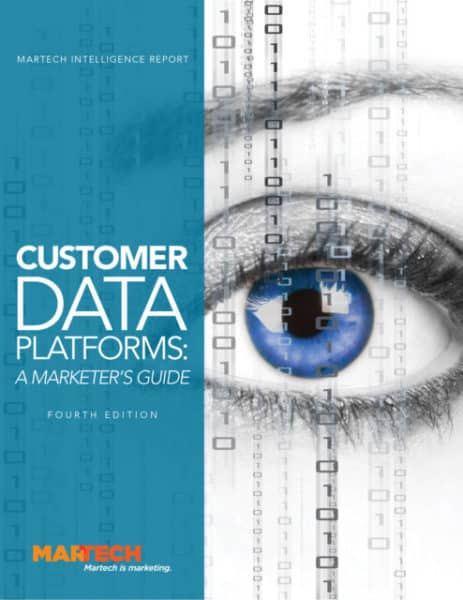Karen Naves, SVP of global demand generation at Tealium, recently gave a presentation on the benefits — and necessity — of connecting customer data to marketing initiatives. This process can help brands gain a more complete view of their audiences, allowing for more personalized experiences.
Many organizations use CDPs or data management platforms to collect and activate this data, helping them meet the unique needs of each customer.
Here are some actionable steps Naves recommends marketers take to enhance their personalization by connecting customer data.
Create buyer personas and ideal customer profiles
“Some people say, ‘I’ve got my [buyer] persona, I’m ready to go. We want to go to market,'” said Naves. “But, they’re not ready yet. They need to figure out their ICP [ideal customer profile] as well.”
“They’re different, but they’re both equally as important,” she added.
The buyer persona is the fictional personality marketers create that represents a specific type of user who interacts with their brand. In contrast, the ICP is a description of customers who will benefit from your product or service.
Getting these confused can disrupt personalization efforts, so marketers should set aside time to create accurate versions of each, connecting customer data appropriately.

“For buyer personas, you’re thinking about creating a better user experience for your customers,” said Naves. “When you’re developing your buyer persona, you’ll consider things like their role within the organization, their title, their responsibilities, as well as some of the challenges they would face.”
Reduce churn with loyalty campaigns
According to Naves, marketers can help reduce customer churn through targeted loyalty campaigns. By rewarding customers after they reach designated tiers, brands can foster engagement.
She offered a fictional example of targeting a gamer who’s signed up for a trial, showing the power of a CDP for driving customer loyalty: “We want to make sure that he doesn’t churn. Using a CDP, we can help prevent it. In this example, we have his website data, his product usage data, and all of the information that he provided to sign up in our CRM database … We’re going to create a [segment] around this gaming data to show that he only plays with 10 characters or less because we noticed in our models that if a person is playing a game and only has 10 characters built into this game, that person will churn.”
“We want to create some kind of reward to encourage him to use more characters, so we would add a subscription offering him one month free if he creates 10 or more characters,” she added.
Marketers and brands can employ loyalty programs like these that fit their audiences and industries. The key is to ensure they’re personalized.

Looking to take control of your data? Learn about trends and capabilities of customer data platforms in the latest edition of this MarTech Intelligence Report.
Implement personalized cross-sell campaigns
“Cross-selling increases revenue and helps reduce churn,” Naves said. “This is your opportunity to hyper-personalize.”
“You want to connect with your customers in a trusted, real-time way,” she added.
The chance of making a sale to existing customers is 60-70%, while the probability of selling to a new customer is only 5-20%, according to data from Invesp. So, it makes sense to market to these existing customers first, especially through cross-selling.
Marketers can use the data from these existing customers to generate personalized offers for complementary or similar products to those they’ve already purchased, and, ultimately, encourage these customers to remain loyal to the brand.
“That’s why applying these strategies from loyalty and cross-sell perspectives is critical,” she said. “They’re used for maintaining customers, and personalization is the absolute key.”
Customer data platforms: A snapshot
What they are. Customer data platforms, or CDPs, have become more prevalent than ever. These help marketers identify key data points from customers across a variety of platforms, which can help craft cohesive experiences. They are especially hot right now as marketers face increasing pressure to provide a unified experience to customers across many channels.
Understanding the need. Cisco’s Annual Internet Report found that internet-connected devices are growing at a 10% compound annual growth rate (CAGR) from 2018 to 2023. COVID-19 has only sped up this marketing transformation. Technologies are evolving at a faster rate to connect with customers in an ever-changing world.
Each of these interactions has something important in common: they’re data-rich. Customers are telling brands a little bit about themselves at every touchpoint, which is invaluable data. What’s more, consumers expect companies to use this information to meet their needs.
Why we care. Meeting customer expectations, breaking up these segments, and bringing them together can be demanding for marketers. That’s where CDPs come in. By extracting data from all customer touchpoints — web analytics, CRMs, call analytics, email marketing platforms, and more — brands can overcome the challenges posed by multiple data platforms and use the information to improve customer experiences.
The post How connecting customer data drives personalized experiences appeared first on MarTech.


0 Comments